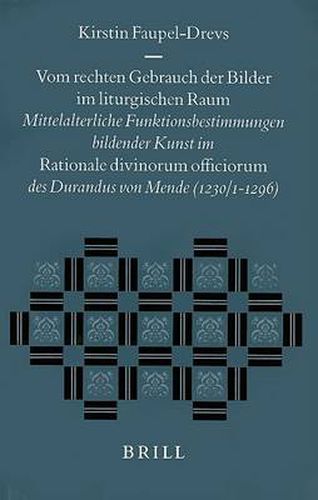Readings Newsletter
Become a Readings Member to make your shopping experience even easier.
Sign in or sign up for free!
You’re not far away from qualifying for FREE standard shipping within Australia
You’ve qualified for FREE standard shipping within Australia
The cart is loading…






This study deals with medieval views of the function of objets d'art in liturgy and the symbolism of church space. Its source is the Rationale divinorum officiorum, a liturgical handbook by Durandus of Mende (1230/1-1296) which was widely available in the Middle Ages. The first part treats the figurative hermeneutics of the Rationale and its premises in Augustine’s doctrine of signs and in the symbolic universal system of Hugh of St. Victor. Its main section deals with the medieval system of rules for dealing with objects, particularly pictures, movable inventory and textiles. Using semiotic approaches an explanation is given of the functional significance of these objects of art in the context of the liturgy and its conscious embedding in ecclesiastical space. A special paradigm for the correct use of objects d'art is provided by the textiles much used in the Middle Ages. The Rationale shows an understanding of art which is representative of that period.
$9.00 standard shipping within Australia
FREE standard shipping within Australia for orders over $100.00
Express & International shipping calculated at checkout
This study deals with medieval views of the function of objets d'art in liturgy and the symbolism of church space. Its source is the Rationale divinorum officiorum, a liturgical handbook by Durandus of Mende (1230/1-1296) which was widely available in the Middle Ages. The first part treats the figurative hermeneutics of the Rationale and its premises in Augustine’s doctrine of signs and in the symbolic universal system of Hugh of St. Victor. Its main section deals with the medieval system of rules for dealing with objects, particularly pictures, movable inventory and textiles. Using semiotic approaches an explanation is given of the functional significance of these objects of art in the context of the liturgy and its conscious embedding in ecclesiastical space. A special paradigm for the correct use of objects d'art is provided by the textiles much used in the Middle Ages. The Rationale shows an understanding of art which is representative of that period.